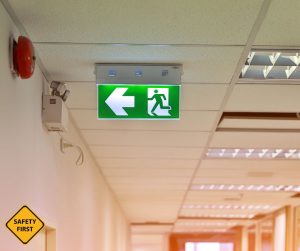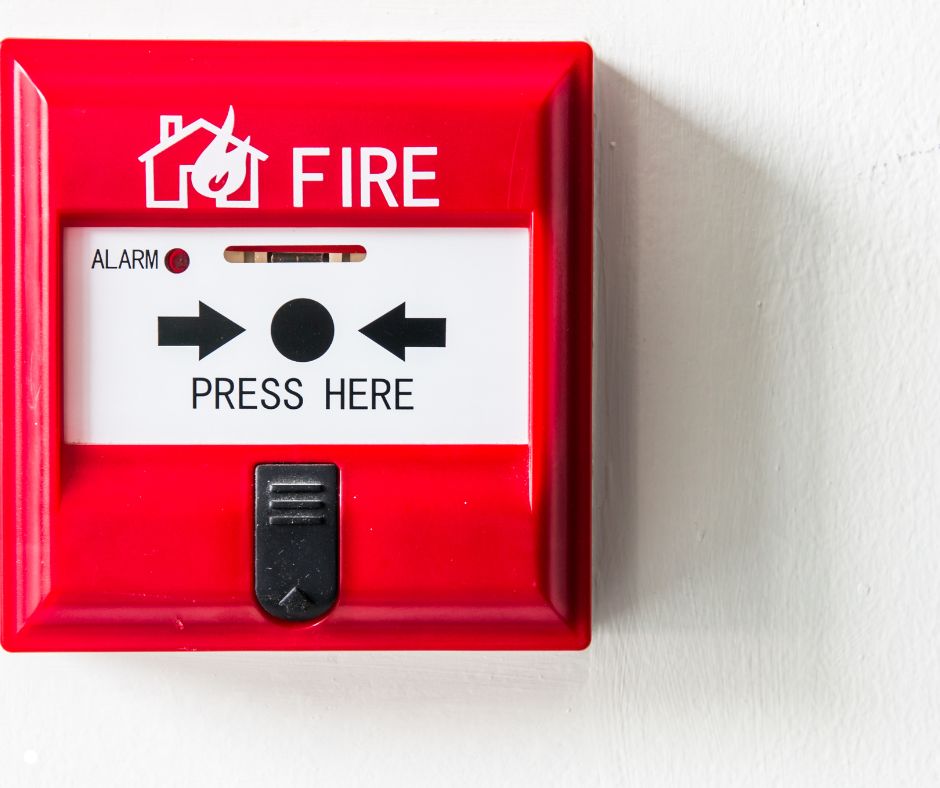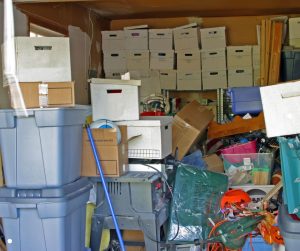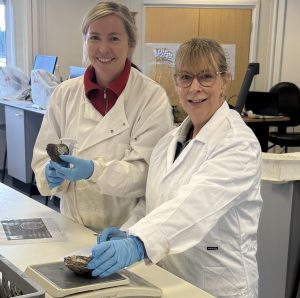A Closer Look at Fire Safety in Schools
With the aforementioned statistics in mind, the Fire Protection Association (FPA) recently decided to look at fire safety issues in UK schools. Let’s dive into some of the most common issues, as identified by the FPA’s experienced assessors, as well as some useful fire risk assessment tips.
Escape Routes
Schools filled with vulnerable young students require ample fire escapes to ensure a swift exit during a fire. Sufficient means of escape prevent delays and overcrowding in an emergency, allowing students and staff to evacuate safely.
Regular inspections and clear signage keep escape routes functional, potentially saving lives in a fire emergency. School staff should open final exits weekly as part of their fire safety checks, to confirm they are operational.
Current UK guidance for educational premises outlines a maximum distance of 18 metres for one direction of travel and 45 metres where there are two directions of travel (measured to a final exit, protected stairwell or separate compartment with continued safe egress).

During a school fire risk assessment, the existing travel distances should be confirmed by the assessor, with recommendations made where appropriate.
In many cases, due to internal layout changes, the guidance regarding acceptable travel distances is not being complied with.
Similarly, with pressure to accommodate an ever-increasing number of students, assembly areas such as the main hall, dining rooms, or gymnasiums may not be large enough for the number of occupants crammed into them. Many educational buildings were constructed when there were far less pupils in the school. The fire risk assessor should undertake an occupancy calculation of assembly areas, using current local guidance.
Alarm Systems
Fire alarm systems are vital, as the school’s first line of defense. Fires need to be detected early, before they spread, particularly in buildings with children who may not be entirely familiar with evacuation procedures.
During their inspections, the FPA noted cases where automatic fire detection had been covered over. In most cases, this was due to the regularity of unwanted alarm activations, caused by smoking or daily work practices in the kitchen, science labs or design technology.
Covering fire alarms is a recipe for disaster. Even minor coverings can hinder detection, delaying evacuation and endangering lives. The person completing the fire risk assessment in the school should help prevent the urge to cover detection, by recommending suitable actions. This may include the installation of different detector heads or better working practices. Regular inspections of problematic areas should also be undertaken.
Sufficient early warning allows school occupants to evacuate quickly, potentially saving lives.

Housekeeping
Good housekeeping isn’t just about appearance, it is essential for fire safety. Clutter such as books, paper, or other flammable materials not only creates fuel for fires but can block escape routes.
The FPA reported that in some schools, standards of housekeeping were noted as being poor during the assessments. This was due to excessive fire loading in departments such as art, drama, and design technology departments and included wall-mounted displays of student work. According to current UK fire guidance for schools (BB100), “notice boards should not be more than 3m wide, and there should be a gap between notice boards on the same wall of at least 1m”.
Unsuitable combustible items are often stored in areas such as plant rooms and electrical cupboards or risers. The fire risk assessor should inspect these areas during the risk assessment and make recommendations accordingly. In addition, suitable waste disposal in schools minimises potential hazards and prevents spontaneous combustion. Robust cleaning practices eliminate dust and grease buildup, which can contribute to fires.
It is important to inspect gym mats and soft furnishings as they can easily become damaged and are often noted as having areas of exposed foam, creating a fire risk.
By prioritising organisation and tidiness in schools, staff and students will have a clear path to exits and firefighters can access the area more easily, boosting overall fire safety.

Fire Safety Management
Effective fire safety management in schools can protect lives and property. It includes preventative measures such as fire-resistant building design, clear escape routes, and proper maintenance of fire alarm systems and extinguishers. Regular inspections identify and address hazards before they cause problems.
During a fire risk assessment, the assessor should inspect evidence that the required maintenance is being completed for all fire safety, electrical, and gas systems within the school building, identifying any gaps. They should provide clear guidance as to how often these systems need to be inspected, including any relevant details, particularly as the premises staff may not have an in-depth knowledge of fire safety management.
Fire safety management goes beyond equipment. Emergency plans and termly drills ensure everyone is up to speed on procedures. Furthermore, staff training is crucial. Trained staff can identify fire hazards, use extinguishers on small fires, and lead calm and efficient evacuations. The iProtectU Learning and Development software provides educational establishments with high quality fire safety training, including eLearning, toolbox talks and more conventional course-based material https://iprotectu.com/learning-and-development-software/
With iProtectU risk assessment software, schools can help ensure the building’s fire safety, identify the most significant fire risks to the school, generate a comprehensive fire risk assessment report, as well as develop and implement fire risk mitigation strategies. https://iprotectu.com/risk-assessment-software/fire-risk-assessments/. iProtectU software is easy to use, affordable, and effective.









